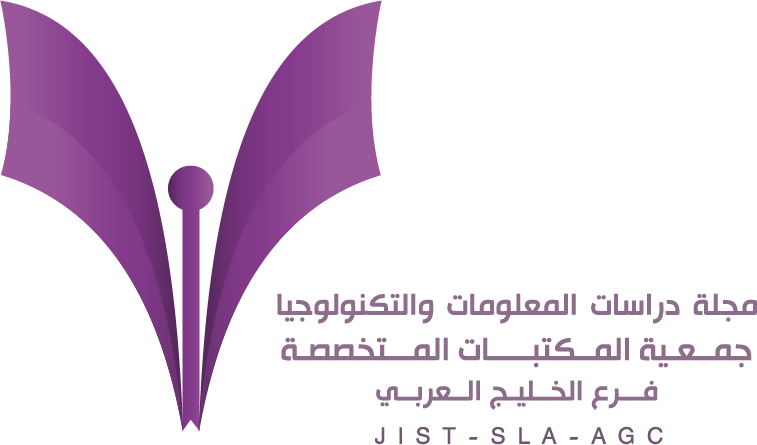-
oa نظم إدارة المحتوى الذكية: مراجعة علمية منهجية
- Source: Journal of Information Studies & Technology (JIS&T), Volume 2024, Issue 2, Sep 2024, 8
-
- 03 March 2024
- 30 April 2024
- 30 September 2024
Abstract
الملخص
أدت الزيادة المطردة في حجم المعلومات إلى خلق تحديات متزايدة لإدارة هذا المد المتنامي من المعلومات، سواء على المستوى الداخلي للمؤسسة أو على المستوى الخارجي، أتاحت معها تقنيات المعلومات إمكانات هائلة للمؤسسات لابتكار طرق جديدة لإدارة هذا المحتوى وتعظيم الاستفادة منه، من خلال تنظيم البيانات، وتحديد السمات والعلاقات والخرائط التنظيمية التي تعكس المشهد المتكامل للعمل داخل المؤسسة.
وفي هذه الدراسة، قام الباحث بإجراء مراجعة منهجية واسعة النطاق لجوانب مجال عمليات إدارة المحتوى الذكية في سياق المؤسسات، حيث تعمد المراجعة العلمية إلى استعراض وتحليل الدراسات العلمية ذات الصلة لاستقراء مواطن القوة والقصور في التغطية الموضوعية، ومن ثم رصد الفجوات المعرفية في أطر الإنتاج الفكري المتصل بموضوع الدراسة، وتحديد أجندة بحثية مستقبلية.
وألقت المراجعة العلمية للدراسات السابقة الضوء على الدراسات الرصينة ذات الصلة المنضوية على الأفكار والأطر المفاهيمية والوظائف التكنولوجية، والتي تناولت قضايا تطبيق نظام إدارة المحتوى، سواء التقليدية أو الذكية في السياق التنظيمي، ومن أجل ضمان وجود طيف متعدد الأوجه من المؤلفين والآراء، تم تحديد 155 دراسة على أنها ذات صلة بموضوع الدراسة، وبعد المراجعة والفرز تم استبعاد 118 دراسة وقبول37 دراسة، وفقاً للمعايير المتعلقة بمراجعة الأدبيات السابقة، منها 12 دراسة باللغة العربية، و25 دراسة باللغة الإنجليزية.
وارتكزت المراجعة العلمية للدراسات السابقة على أربعة محاور رئيسية هي: المؤسسة، والمحتوى، والعمليات، والتكنولوجيا. وقد سلطت النتائج الرئيسية الضوء على أنه على الرغم من وجود عدد متزايد من الأوراق التي تناولت صناعة المحتوى الرقمي، والحفظ الرقمي، وبناء وإدارة المستودعات الرقمية المؤسسية، إلا أن العديد من القضايا لا تزال مهملة، خاصة في الجوانب المتعلقة بتخطيط وتنفيذ نظم إدارة المحتوى الرقمي المؤسسي، حيث أظهرت المراجعة العلمية الحاجة إلى صياغة نموذج مرجعي شامل لتنفيذ إدارة المحتوى في المؤسسة. كما تؤكد المراجعة على أهمية بناء وإدارة المحتوى الرقمي في المؤسسات ومراكز المعلومات، وضرورة تبني نظام فعّال ومرن لإدارة المحتوى الرقمي من خلال الخطط والاستراتيجيات التي تكفل استدامة هذا المحتوى من خلال إدارته بكفاءة لتحقيق الاستفادة المرجوة منه، وكذلك العمل على تعزيز قدرات نظم إدارة المحتوى سواء التقليدية أو بدون رأس (Headless CMS)، من خلال دمج واستثمار إمكانات وقدرات أدوات الذكاء الاصطناعي (AI).
The exponential growth of information has created significant challenges for organizations to manage this growing tide of information, both internally and externally. Information technologies provide massive potential for innovation, enabling organizations to devise new ways to manage content and maximize the benefit from it. This involves organizing data, identifying attributes and relationships, and creating organizational maps that reflect the integrated landscape of work within these organizations.
In this study, the researcher undertook a wide-range systematic review of content management aspects within the enterprise context. The paper reviewed and analyzed the relevant studies to examine the strengths and shortcomings in addressing this area, thus determining knowledge gaps in intellectual production frameworks related to this subject. This led to the identification of a future research agenda aiming at addressing these gaps.
The systematic review of previous studies highlighted various ideas, conceptual frameworks, and technological functions which addressed Content Management Systems (CMS) applications issues, encompassing both traditional and intelligent approaches within the organizational context, To ensure a multifaceted variety of authors and opinions, the review identified 155 studies relevant to the study topic., Following a thorough review and screening process, 118 studies were excluded , while 37 studies met the criteria for inclusion. Among these, 12 studies were in Arabic and 25 were in English.
The Systematic review of previous studies was based on four main themes: enterprise, content, processes, and technology. Key findings highlighted that although there is an increasing number of literature addressing aspect of the digital content industry and digital preservation, as well as the building and managing of enterprise digital repositories, many issues remain overlooked, particularly in aspects related to the planning and implementation of enterprise digital content management systems. The scholarly review revealed the need to formulate a comprehensive reference model for the implementation of enterprise content management. Furthermore, the audit emphasized the significance of establishing and managing digital content within organizations and information centers. It highlighted the need to adopt an effective and flexible digital content management system through plans and strategies ensuring the sustainability of this content by managing it efficiently to achieve the desired benefit. Additionally, the review recommends enhancing the capabilities of classical and headless content management systems (Headless CMS), by integrating them with artificial intelligence (AI) tools.


